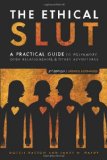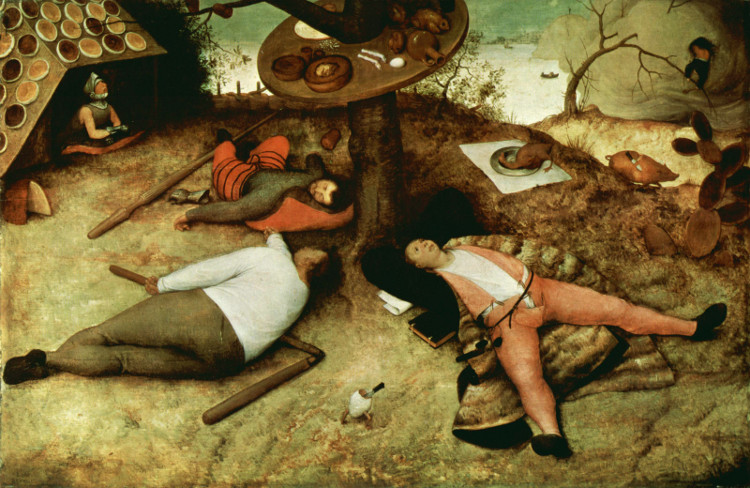This is the last entry in my read-through of The Ethical Slut, 2nd edition. For more, check the Table of Contents at the bottom of the series introduction. Comments on the topics in this discussion are welcome anytime, even from people who aren’t following along in the book.
This week, the Conclusion, “A Slut Utopia,” and Kit’s final comments on the book.
I began my read-along of The Ethical Slut about ten months ago now at the behest of several of my readers including my friend, coauthor, and guest blogger Kiki Christie. The format has changed over the course of the series — I realized that more people would participate if I emphasize that this is a conversation about poly topics inspired by a book, instead of expecting others to keep up in the book. I’ve really enjoyed exploring my own feelings about polyamory and non-monogamy through the lens of this classic of the field. A lot of readers have left great comments, and the series has also spawned some insightful guest posts.

In the conclusion, Janet Hardy and Dossie Easton reiterate one of the core values of the book one more time — choice. Our dominant culture doesn’t want us to think about the choices we have other than which brand to purchase at the grocery store, but we can actually put a great deal of conscious choice into how we craft our lives. When our desires fall strongly counter to the overall culture, we are often forced to set out on our own, but those same choices are available to everyone.
“There are lots of ways to relate, to love, to express gender, to share sex, to form families, to be in the world, to be human . . . and none of them in any way reduces or invalidates any of the others.” –quotation from The Ethical Slut
Honey J recently sent me an article on, in part, how deeply our desire is to create us vs. them dichotomies. Easton and Hardy write passionately against this behavior in The Ethical Slut’s conclusion, urging us to think of many possibilities instead of just two categories of right and wrong. It’s especially sad when we see it happening within our own movement. Despite the fact that, as the authors argue, my sexual choices do not in any way take away from anyone else’s, others even within non-monogamy may see them as an affront. If someone chooses to form polyfidelitous triads or family units, my desire to still have sex for sex’s sake sometimes shouldn’t matter to them any more than a gay man’s marriage should affect a heterosexual couple’s union.
Yet when I posted about last week’s chapter on FetLife, the first response I received was from someone who objected to associating polyamory with group sex and similar behaviors. She had explored such things and found them wanting, and now wants to focus on relationship building. I don’t see that the two are in opposition, or even mutually exclusive. Just as some people find spiritual fulfillment on a dance floor and others in a Buddhist temple, so too there are many routes to a lifestyle that is intimately, sexually, and emotionally fulfilling. We should support these differing goals, because all of them involve busting open the shell of “propriety” and creating new ways of living.
Many fantasy and science fiction novels explore utopia. One concept which often leads to utopian speculation is the idea of post-scarcity — living in a land of plenty that meets all survival needs through magic or technology. When so many lives struggle for basic resources, it’s natural to wonder what society would look under other conditions.
In the conclusion, this book asks readers to imagine a state of sexual post-scarcity, where everyone gets all the touch, compassion, pleasure, and connection they want. The monogamous would be just as free to pursue monogamy as the polyamorous would be to seek polyamory; likewise for the queers, kinksters, sluts, and so on. Like all utopias, we’re unlikely to see anything like it in our lifetime or any other. Yet there is a reason we yearn toward this imaginary ideal, and it can teach us a lot about the choices we might make to find a better world.
I’ve been polyamorous for long enough now that it is no longer a question to me of whether or not polyamory can work; I need only look at the life I am living now to know that it can. The question then becomes how do we make it work best, and how do we share the joy it gives with others? I love seeing my friends, especially those in the Burning Man community, working toward a better, more loving society. Even many of my friends who are monogamous choose a kind of ‘monogamy+’ in one way or another, questioning assumptions and making conscious choices — does monogamy mean emotional and sexual exclusivity, or just one? It’s up to each person or relationship to decide.
Writing this series has made me take a deep look at my life, and even realize a few places where I could be living more fully and honestly in my interactions with my poly family and network. I hope that this read-along has helped my readers grasp new choices they might make, and to think more about the ones already made. Feel free to share any last thoughts about the book, or our discussion of it, in the comments below.
Next week, instead of a read-along, I hope to bring you the first part of my Guide to OKCupid Dating, with my coauthor Molly Rene. In a few weeks, we’ll begin a new read-along, this time of Opening Up by Tristan Taormino. Like The Ethical Slut, this book has become one of the most widely respected resources on ethical non-monogamy. It is available in paperback, as an audio CD, on the Amazon Kindle (where I’ll be reading it), or in Audible format. I’ll let my readers know a start date when I choose one.
I put many hours of my time into this free read-along. If this series has been useful to you, please consider making a small donation.
Until next time, thank you for reading and may your choices bring you great joy!
